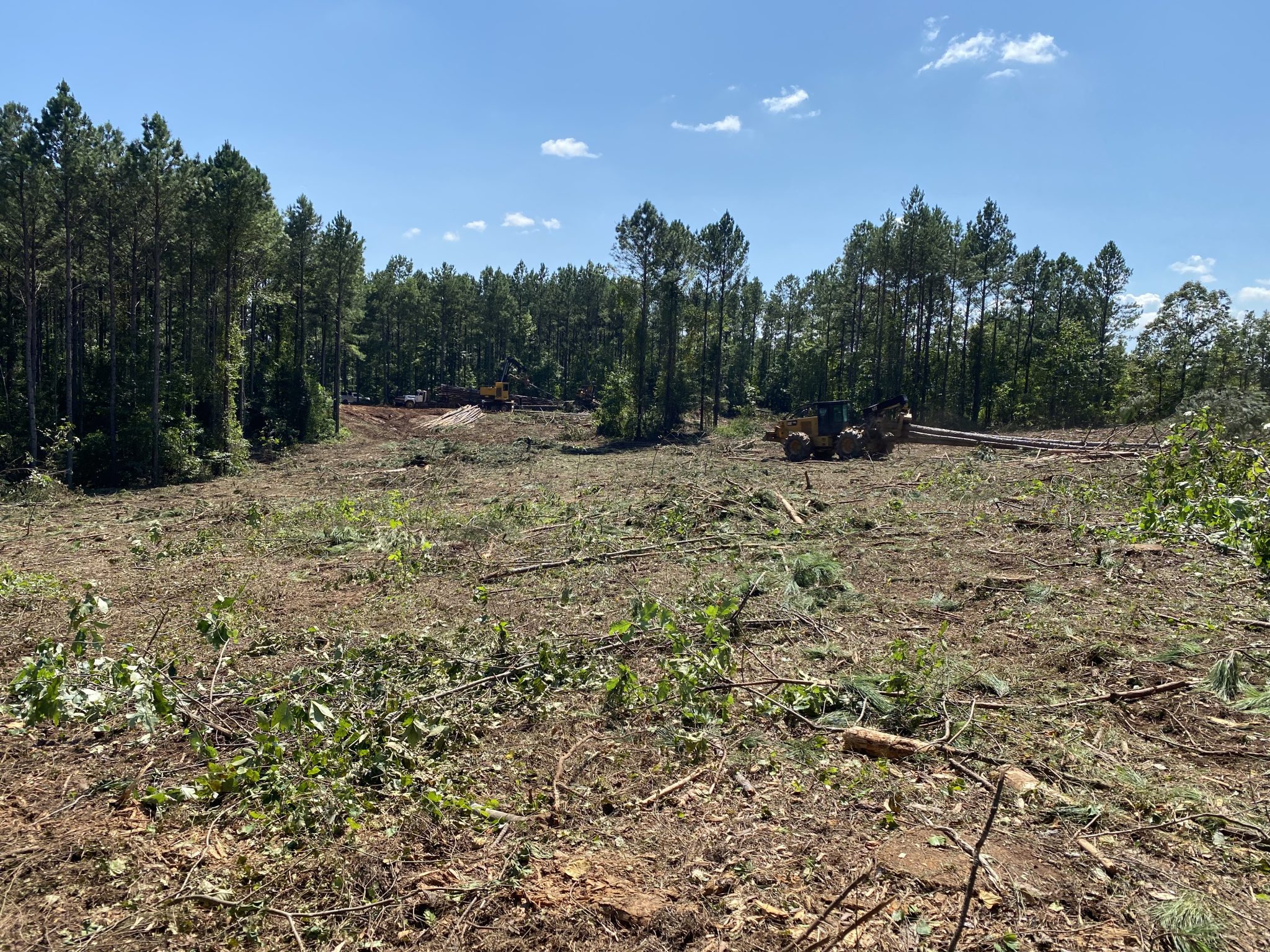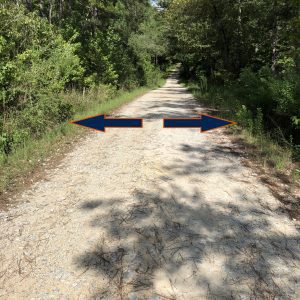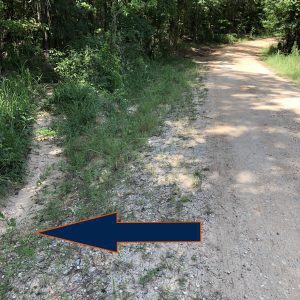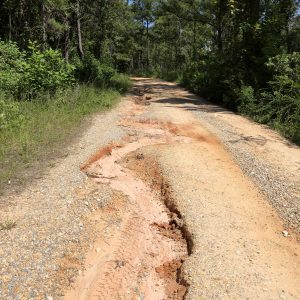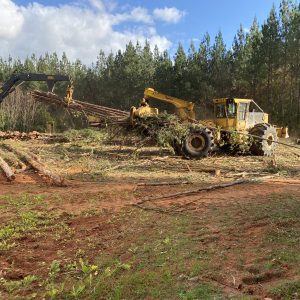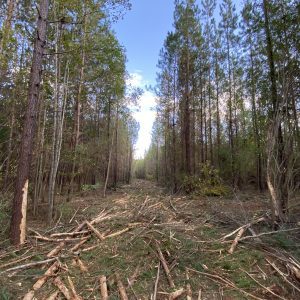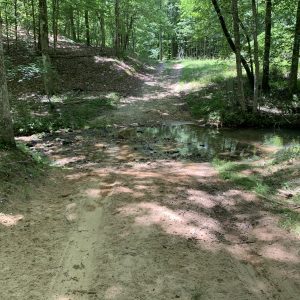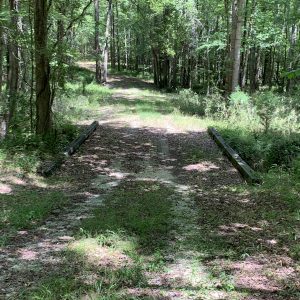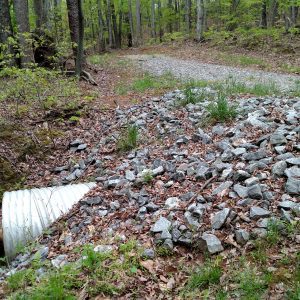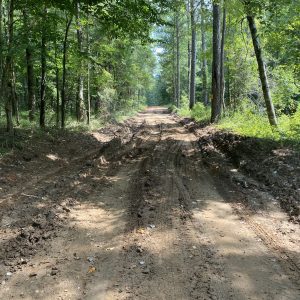Forestry

Nonpoint source pollution (NPSP) can be a concern on active and recently completed timber harvests. Erosion is the top NPSP pollutant associated with timber harvesting. The most critical areas to control erosion are forest roads, skid trails, streamside management zones (SMZs), and stream crossings, as these areas can have direct access for erosion to reach waterways.
Erosion becomes a problem when soil particles enter waterways or waterbodies. This process is called sedimentation. Water flows downhill, so it is also vital to protect areas away from waterways. Sedimentation can affect water quality as well as aquatic organisms and fish. Forestry best management practices (BMPs) are guidelines that can help protect physical, chemical, and biological water resources from timber harvest activities. Forestry BMPs were created in response to the Federal Water Pollution Control Act of 1972 (Clean Water Act), Alabama’s Water Pollution Control Act, and Alabama’s Coastal Zone Management Act.
When implemented, forestry BMPs are effective in protecting water resources. Loggers implement BMPs during and after harvesting timber. Loggers in Alabama are trained through the Alabama Professional Logger Manager (PLM) initial training, which teaches loggers sustainable forestry initiative (SFI) standards. Loggers receive additional BMP training at continuing education workshops each year.
Forest Roads
Forest roads can be permanent or temporary (haul) and are designed to get log trucks from the logging deck to the main road. Road BMPs consist of guidelines for road construction, maintenance, surface drainage, surface erosion, traffic control, and road close-out methods for temporary haul roads. Examples of forest road BMPs are crowned roads, road ditches with turnouts, out-slope roads, in-slope roads with cross-drain culverts, water diversion devices (broad-based dips), gravel/rock, grass seed and straw, road grade minimization, and avoidance of sensitive areas (wetlands, highly erodible soils, etc.). Forest road BMPs help improve the stability of and access to forest roads during and after high rainfall events. BMPs recommend limiting access on your forest road. Installing a gate can help eliminate unwanted traffic.
- Figure 1a. Crowned forest road with ditches on both sides to get water off the road quickly.
- Figure 1b. Ditch turnout to get runoff and erosion out of the forest ditch and into the forest.
- Figure 2. Forest road with erosion problems due to not directing runoff off the road.
Skid Trail BMPs
Skid trails are where trees are dragged from the feller buncher (cutter) to the logging deck to be processed and loaded on a log truck. Skid trail BMPs consist of guidelines for planning, construction, and close-out methods.
Properly closing out skid trails is essential for limiting erosion and sedimentation after the harvest is completed. Close-out techniques include the following:
- Installing water diversion devices (water bars with turnouts).
- Applying or spreading grass seed and straw or logging slash on high-erosion risk areas.
- Minimizing rutting and compaction of the soil.
- Limiting the distance of skid trails on steep slopes (occasional breaks in grade).
- Placing logs or logging mats to operate equipment on wet sites (mat or shovel logging).
- Limiting the number of skid trail stream crossings.
- Using hay bales or silt screen to prevent or stop sediment movement on steep segments.
- Figure 3a. Skidder taking logging slash from the logging deck to spread on high trafficked and erosion susceptible areas.
- Figure 3b. A high trafficked and erosion susceptible area.
Stream Crossing BMPs
Loggers sometimes have to cross streams for log truck access to the site or skidding timber from the other side of a stream. Stream crossing BMPs are important for protecting water quality as these areas have direct access for sediment entering waterways.
Proper stream crossing methods include the following:
- Fords or low-water crossings (temporary or permanent).
- Culverts (temporary or permanent)
- Bridges (temporary or permanent)
- Log crossings (temporary). Temporary crossings are removed after the timber harvest and additional BMPs are implemented at this time to protect water quality.
All stream crossing methods should allow fish and aquatic organisms to pass freely through the crossing. Stream crossing BMPs are as follows:
- Limiting the number of crossings on a site.
- Locating crossings where they will have the least disturbance on the streambank and on a straight segment of the stream.
- Installing water division devices to slow down and divert runoff away from the stream.
- Removing temporary crossings once an operation is completed, stabilizing critical areas (stream approaches and banks), and maintaining crossings.
- Figure 4a. Stream crossing method: ford.
- Figure 4b. Stream crossing method: bridge.
- Figure 4c. Stream crossing method: culvert.
- Figure 5. Critical road segment next to stream crossing (not shown) rutting and moving sediment toward a stream. Regrading and applying gravel are recommended.
Streamside Management Zones BMPs
Streamside management zones (SMZs) are buffers (strips of trees/vegetation) adjacent to waterways that filter and trap erosion so that it does not reach the waterway. SMZs are implemented on all perennial streams (flow year-round and have a well-defined channel) and require a minimum of 35 feet on both sides of the stream after the harvest. Up to 50 percent of the canopy cover can be harvested without trees being removed directly on the stream bank.
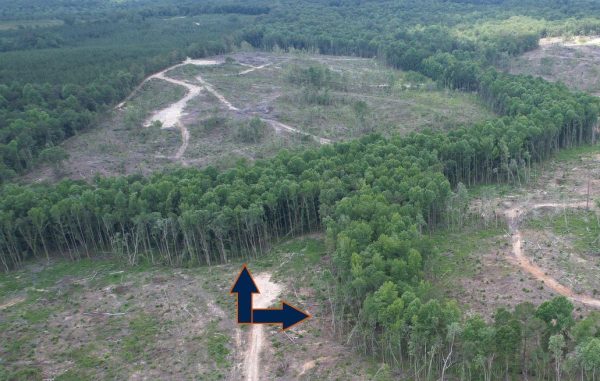
Figure 6. Streamside management zone is identified by the arrows.
Intermittent streams (flow part of the year and have a well-defined channel) only require a vegetive buffer, but leaving a minimum of 35 feet on both sides of the stream is still recommended. Streams that only flow during rainfall events and do not have a well-defined channel are ephemeral and do not have any SMZ requirements, equipment traffic should be minimized in these areas.
Additional BMPs for SMZs include the following:
- Do not harvest trees on steep slopes within the SMZ.
- Limit equipment usage.
- Do not remove trees that provide shade to the waterway.
- Fell and skid trees directly away from the waterway.
- Remove logging debris if they fall into the waterway.
- Stabilize critical areas
- Do not locate log decks in SMZ.
Additional Resources
- “Timber Harvesting Guidelines for Forestry Best Management Practices” on the Alabama Extension website.
- Alabama’s Best Management Practices for Forestry on the Alabama Forestry Commission website.
 Richard Cristan, Extension Specialist, Assistant Professor, Forestry, Wildlife and Environment, Auburn University
Richard Cristan, Extension Specialist, Assistant Professor, Forestry, Wildlife and Environment, Auburn University
New November 2022, Controlling Erosion when Harvesting Timber, FOR-2122

